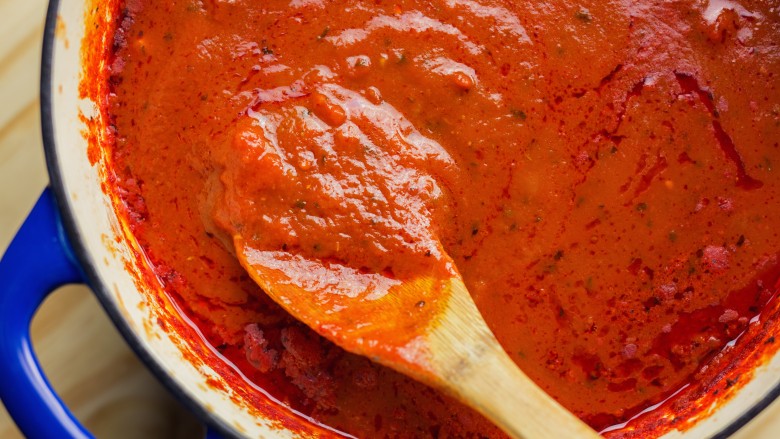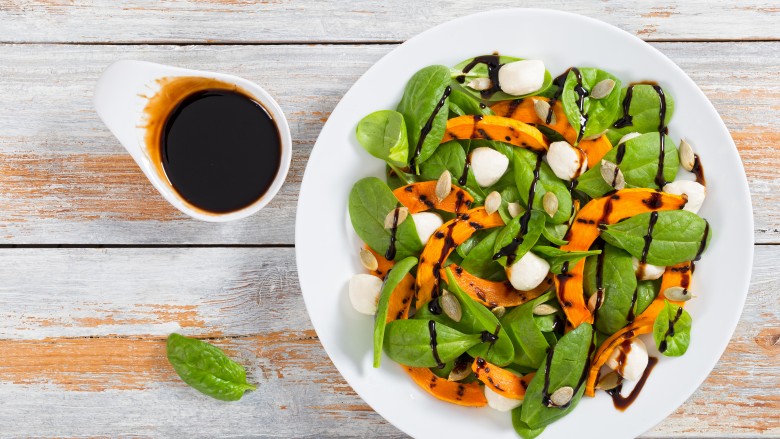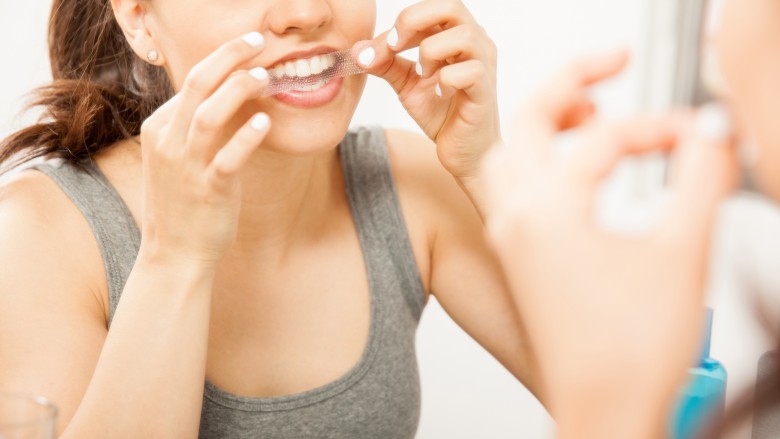Foods That Stain Your Teeth
It can be embarrassing to look in the mirror and see less-than-white pearly whites smiling back at you. Sparkling white teeth can make you feel confident and self-assured, while yellowed teeth can leave you wanting to shyly hide your smile. There are many things that can cause your smile to look a little more creamy yellow than white, from genetics (some people just get lucky, you know?) to lifestyle behaviors — such as skipping a few too many brushings or flossings, smoking or chewing tobacco, or even eating certain foods. Many of the foods that commonly cause staining contain "little bits of acid called tannins," Monicah Johnson, the head dental hygienist at Chicago's Downtown Dental, tells us. Those tannins cling to teeth and can yellow your teeth over time, especially if you eat or drink these foods regularly or indulge in excess.
While rinsing those acids off of your teeth soon after eating or drinking an offending food product can help keep some of the worst of the potential staining at bay, continuing to include those items in your diet will likely eventually cause your teeth to stain. Eliminating them entirely is the only surefire way to prevent stains. That's the bad news. Maybe even worse? Teeth that have a yellow, brown or otherwise off-color hue can make you look much older than you are. Not great. But knowing which foods may be dulling your smile — and how you can keep those embarrassing stains to a minimum — is the key to keeping your teeth (and smile) beautiful.
Coffee and tea
According to Johnson, coffees and teas are both high in tannins, which is why they are common culprits when it comes to tooth stains. To avoid staining your teeth without having to give up your caffeine habit entirely, the dental hygienist recommends using a cup with a lid.
"We used to tell people to use a straw, and they still can if they're not worried about wrinkles, but, longterm, if you're sucking on a straw all day, everyday to drink your coffee out of, you may get some wrinkles from puckering your lips," Johnson says. "[I]t'll minimize the stains because you're not swishing it all around in your mouth when you drink it with the lid, it's going almost directly to your throat — unless you...are swishing it around your mouth, and that would defeat the whole purpose. But usually we just say use a lid."
Wine
You know those slightly purply-grey smiles your friends get after they've sipped on a few glasses of red wine? Though for some people they're only temporary, those stains can potentially set in to teeth, depending on how your specific teeth absorb stains, Johnson says. Tannins are to blame for stains caused by wines as well. But what you may not realize is both red and white wines can make tooth staining worse. According to a study published by New York University researchers, while it doesn't cause staining, white wine can make tooth stains darker. Not a lot of comfort for those who choose white wine in part to keep their smile pearly.
Drinking water interspersed with or immediately following a glass of wine can help those pesky stains from sticking around by rinsing acids off the teeth before they can strongly cling and cause stains, according to Johnson.
Pasta sauce
Between the bright red color and the acidity of tomatoes, pasta sauce can, perhaps unsurprisingly, cause stains. Johnson said the Downtown Dental team advises patients looking to keep their teeth white while still enjoying a bowl of pasta from time to time to choose an appetizer of broccoli, spinach, or other green veggies. They can leave a sort of "protective film" on the surface of your teeth, preventing the sauce from clinging to them and eventually causing stains.
Berries
Summery blueberries, blackberries, and raspberries can all leave your teeth with a little less of a luster. These berries often cause stains similar in appearance to red wine stains. Berry stains are tricky to combat. According to Johnson, drinking lots water during and after eating berries can help prevent staining. It's important to note, however, that she also cautions against immediately brushing your teeth.
"[Y]ou want to rinse the acids off right away. You don't want to brush it into the enamel, but drinking water immediately or during (as you're eating them) just helps it not sit there as long," she explains to us.
Curry
Curries' bright colors can, over time, cause your teeth to take on a more yellow-looking hue. If you eat many meals that incorporate turmeric, curry powders or spice blends, and other stain-inducing spices, you might find your teeth aren't looking quite as white. As with tomato-based sauces, the Downtown Dental team suggests incorporating lots of fresh fruits and veggies into meals with curry, as well as lots and lots of water.
Balsamic vinegar
While balsamic vinegar is both acidic and deeply colored, it might still be somewhat surprising that this very common salad and side dish ingredient can cause stains to form on your teeth. If you're going to continue to incorporate balsamic vinegar into your diet, consider pairing it with leafy veggies such as lettuce or kale, which New York-based dentist Jonathan B. Levine, D.M.D., tells Everyday Health can act as a barrier to those stains' ability to clinging to teeth.
Beets
If you've ever cooked with beets, you're well-aware of their staining ability. Beets have a pretty, ruby red gem-toned center, which means not only do they stain, but those stains are majorly tricky. According to a blog post by Ronald Perry, clinical professor and director of Gavel Center for Restorative Dental Research at Tufts University School of Dental Medicine, beets are a common food that can cause enamel stains. The best way to avoid staining your teeth is to enjoy them in moderation.
Whitening products can get rid of extrinsic stains
While it's not uncommon to hear people say that teeth whitening products are bad for your teeth, Johnson tells us that as long as the user follows the directions on over-the-counter whitening toothpastes and other products, they're perfectly safe. Like anything else, don't overuse them or they could potentially cause problems.
However, if you often suffer from sensitivity, over-the-counter whitening products could make sensitivity issues worse while using them, Johnson says. The best way to combat that? Stop using them. These products are designed to help fade or eliminate extrinsic stains, or stains that appear on the outside surface of teeth. Johnson tells us that extrinsic stains are the kinds of stains caused by foods and beverages, while the gray staining indicative of a dead tooth or nerve issues is caused by intrinsic staining. If you're worried about intrinsic staining, speak to your dentist or dental hygienist.








